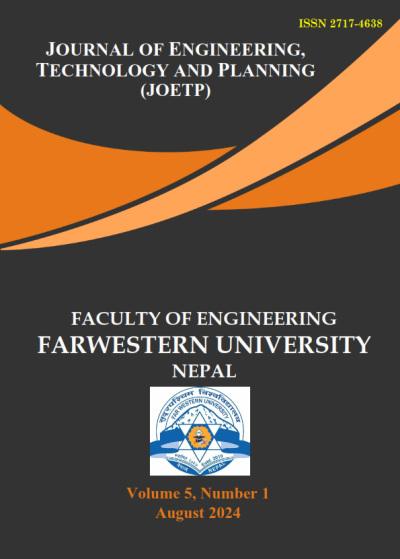Numerical Analysis of Load-sharing Behavior of Combined Pile Raft Foundation System
DOI:
https://doi.org/10.3126/joetp.v5i1.69648Keywords:
Load sharing, Numerical analysis, Performance evaluation, Pile raft foundation, Soft soilAbstract
This study investigates the application of combined pile raft foundations in the soft soil of Kathmandu Valley, taking into account varying pile spacing and length. Both embedded beams and volume piles were used in numerical analysis to assess the load-sharing behavior of the raft and pile under different conditions. The settlement results from the volume pile, and embedded beam element was comparable, with less than a 6.21% difference, indicating that both methods are equally suitable for evaluation. The embedded beam element was selected for further analysis. The analysis suggests that pile load sharing is primarily influenced by spacing, while an increase in pile stiffness due to increased pile length has a minor effect. The load-sharing factor follows a log-linear relationship when the spacing exceeds 3D. Regarding the normalized vertical settlement of the pile, the power rule governs the load-sharing factor. This power function related to normalized settlement is highly beneficial for designing the CPRF and choosing the appropriate pile spacing and length. Finally, the capacity utilization curve suggests that a spacing greater than three times the diameter results in higher pile capacity utilization. Conversely, a decrease in spacing significantly reduces the mobilized strength of the piles.
Downloads
Downloads
Published
How to Cite
Issue
Section
License
Copyright © Faculty of Engineering, Far Western University

